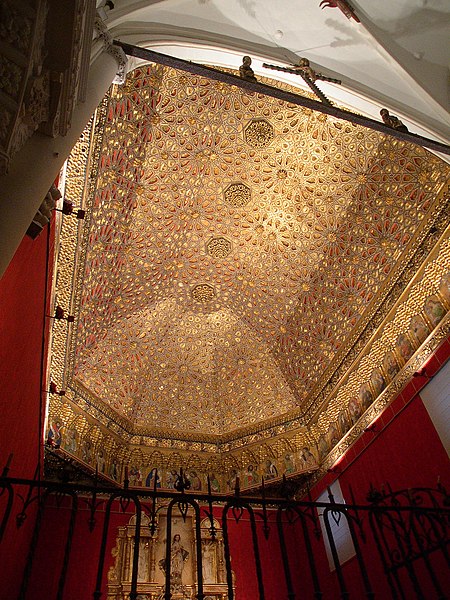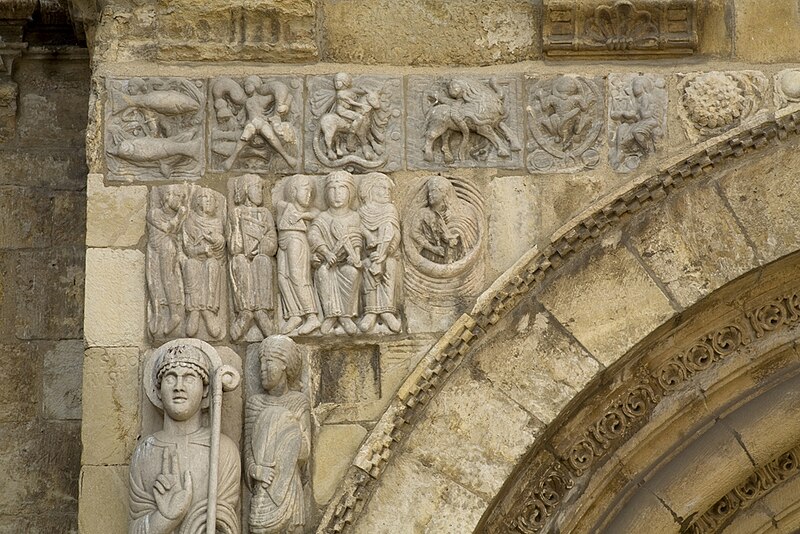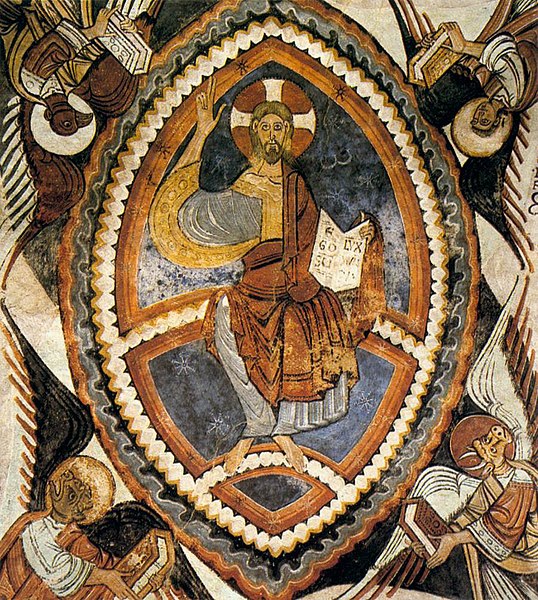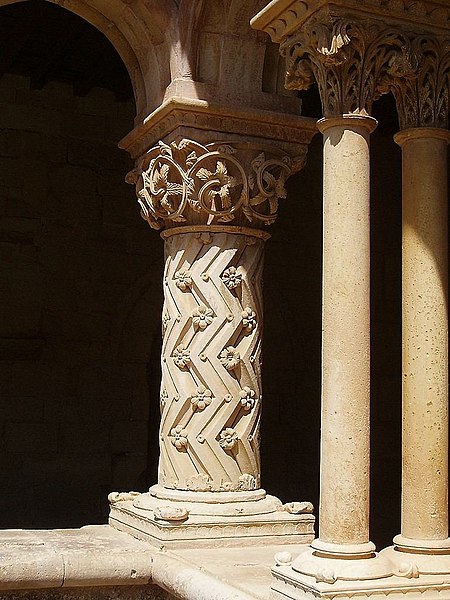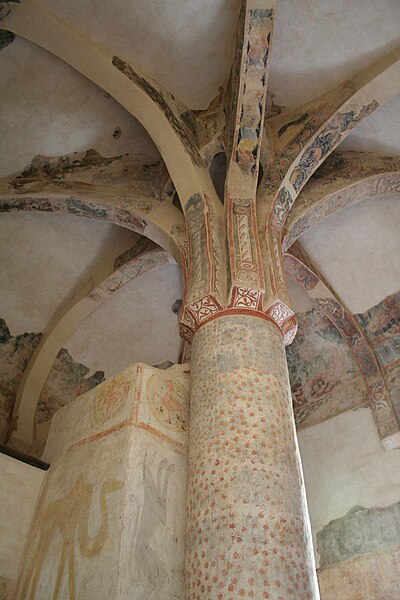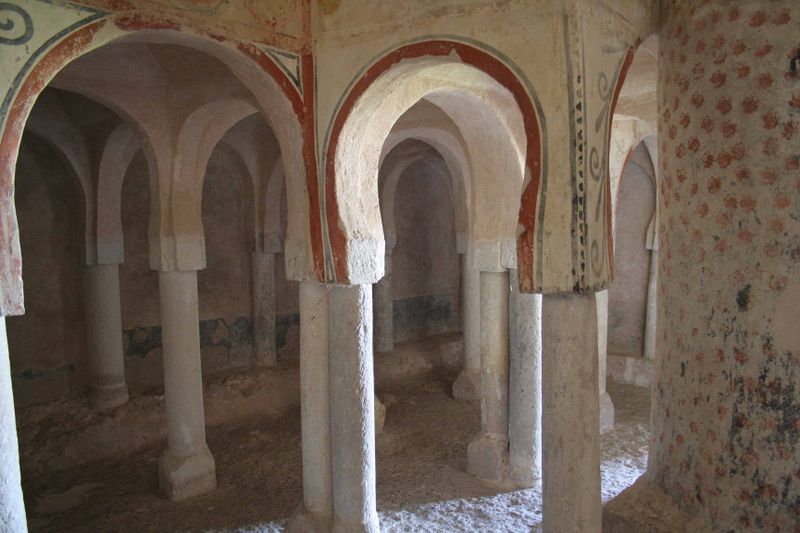Showing posts with label Middelalderen. Show all posts
Showing posts with label Middelalderen. Show all posts
Friday, 30 August 2013
5 Medieval Women Writers
Leonor López de Córdoba, author of Memoirs of Doña Leonor López de Córdoba.
Her short autobiography (of nine pages) includes an eyewitness narrative of the siege of Carmona (Seville). It was written in the early 15th century.
Teresa of Cartagena, author of The Grove of the Sick and Wonder at the Works of God (Admiratio Operum Dei).
She was a Spanish nun, who became deaf mute in the 1450s. Her works are the earliest feminist texts in Spanish.
Florencia Pinar, author of several poems.
They were included in the lyric collections of the period (late 15th c).
Constanza de Castilla, author of a Devotionary (ca. 1474).
She was the prioress of Santo Domingo el Real (Madrid).
Isabel de Villena, author of Vita Christi.
She also wrote several treatises and a mystical work, the Speculum Animae, now lost.
Labels:
15. Jahrhundert,
15th century,
Books,
Bücher,
Medeltiden,
Medieval,
Middelalderen,
Middeleeuwen,
Middle Ages,
Women,
Women Writers,
Writers,
книг
Thursday, 23 May 2013
Knights and Statues
A seated
statue of St. James has been preserved in the Abbey of Las Huelgas (Burgos), where
knights of the Order of Santiago armed themselves. The sculpture’s right arm
could be moved by means of a cord, and was used in the ceremony of adoubement
in the mid-thirteenth century. The saint
tapped the side of the sword’s blade onto the king’s shoulders when the
ceremony was performed, as knighthood could not be conferred by anyone of lower
rank. Tradition says that it was the invention of Saint Ferdinand III. Four
other kings of Castile were armed in this way, as well as Edward I of England. Afterwards,
- on November 1, 1254 - Edward
and Eleanor of Castile were married in
the Abbey of Santa María la Real de Las Huelgas.
http://upload.wikimedia.org/wikipedia/commons/a/af/Monasterio_de_Sta._Maria_la_Real_de_Huelgas_-_Marioneta_del_.jpg
http://upload.wikimedia.org/wikipedia/commons/a/af/Monasterio_de_Sta._Maria_la_Real_de_Huelgas_-_Marioneta_del_.jpg
The main
character of The Youthful Deeds of Rodrigo advises King Ferdinand I the Great
to be dubbed a knight by St James (in Santiago de Compostela), as the only way
to gain authority. Consequently, he would recognize no authority other than the
Apostle’s. Rodrigo mentions the patronage of St. James and the prayer vigil,
and tells the king “to arm himself during the Mass.” (“Rey, fasta que
non te armases non devías tener reinado; /ca no esperas palmada de moro nin de
christiano, / mas ve velar al padrón de Santiago; / quando oyeres la missa,
ármate con tu mano (…)” (1)
There is
also another remarkable reference to a statue in this epic poem. The Castilians
carved a stone sculpture featuring count Fernán González; then they swore
loyalty to it and, therefore, became its vassals. Hence they could not
recognise another lord – even the “original” one – until they had broken their symbolic
links to the stone.
“(…) the Castilians (…) / neither kissed his
hand nor called him their lord, / as they had paid homage to a stone; they
carried it around in a cart / as their lord, until they met the count [Fernán González]” [(…) los
castellanos (…) / no l’ bessaron la mano, nin señor no l’ llamaron, / ca avían
fecho omenaje a una piedra que traxieran en el carro, / que traían por señor,
fasta que fallaron al conde (Fernán González).”] (2)
(1) Épica medieval española (Carlos Alvar, Manuel
Alvar eds.); Madrid: Cátedra, 1991, 138, vv. 653-56.
(2) Ibíd., 106, vv. 9-12.
Labels:
accolade,
fealty,
knighthood,
Medeltiden,
Middelalderen,
Middeleeuwen,
Middle Ages,
Mittelalter,
Moyen Âge,
riddere,
ridders,
Ritter,
vassalage,
рыцари
Tuesday, 21 May 2013
Medieval Castile and León: 10 Must-See Places
 |
| Church of Saint Mary the Great, Toro (Province of Zamora). 12th - 13th c |
Royal Convent of Santa Clara, Tordesillas (Province of Valladolid) 14th c
Basilica of San Isidoro, León. 11th -12th c.
http://www.sanisidorodeleon.net/ind_english.html
(Province of Palencia)
12th -13th c
Hermitage of San Baudelio de Berlanga, the Sixtine Chapel of Mozarabic art, 11th c
(Casillas de Berlanga, Province of Soria)
http://berlanga.blogia.com/2007/032902-la-palmera-sagrada.php

Abbey of Santa María la Real de las Huelgas, Burgos. 12th c.
The monastery houses the Museo de Ricas Telas, a showcase of medieval textiles.
http://www.monasteriodelashuelgas.org/historia.html
http://www.monasteriodelashuelgas.org/arte.html
http://www.paradoxplace.com/Photo%20Pages/Spain/Camino_de_Santiago/Burgos/SM_Real_Huelgas/Huelgas_Nunnery.htm

Gormaz Castle (10th c), a 390-meter- long citadel placed on a hill.
It was owned by the Cid (ca.1087).
(Province of Soria)
http://www.spain.info/en_GB/conoce/monumentos/soria/castillo_de_gormaz.html

Alcázar of Segovia
12th - 16th c
Basilica of San Vicente, Ávila. 12th c
Rupestrian Church of Olleros de Pisuerga (Province of Palencia) 7th- 11th centuries
http://www.arquivoltas.com/8-palencia/02-Olleros00.htm
Map of other hermitages nearby:
http://villacibio.blogspot.com.es/2009/02/ermitas-rupestres-del-alto-ebro-y_1033.html
Labels:
Medeltiden,
Medieval,
Middelalderen,
Middeleeuwen,
Middle Ages,
Mittelalter,
Moyen Âge,
Must-See,
Must-See Places,
Reise,
Reizen,
Rejser,
Spain,
Spanien,
travel,
스페인,
여행,
중세,
中世
Monday, 20 May 2013
Women in Spanish Epic Poetry
Epic poetry
and medieval chronicles provide valuable information on the condition of women
in medieval Spain; beyond the stereotype of the faithful wife - exemplified by
doña Ximena in the Poem of the Cid - some remarkable female characters can be
found in Spanish epic poetry; strong women, as irascible, vengeful doña Lambra,
women defending their rights – the laws in force at the time -, demanding
justice, seeking revenge, or even taking justice into their own hands (as does
Sancha in the Romance of Prince García). In addition, the texts give a glimpse
of the life of peasant women.
Although
Spanish epic poetry combines historical events with folk-motifs, it is interesting
to study those female role models, even if they were mere inventions of fiction.
On the other hand, some documents show women actively defending royal
privileges and exemptions given to communities in northern Castile. (1) The Chronica Adefonsi Imperatoris tells how, in 1139, Berengaria de Toledo – while
her husband, King Alfonso VII, was away - , prevented the town from being
overrun; having cunningly hidden the few
remaining soldiers, she talked and parleyed with the Muslim chieftains for
shaming on their dishonorable action; finally, they lift the siege. (2) Though
there is no evidence yet to suggest that in the 12th and 13th centuries women
participated in military actions (even for self-defence needs), in fact, they could claim a share of the spoils,
which often included weapons; in this case,
women could inherit them from their parents (3); a woman was also allowed
to inherit from her father a castle granted by the king (4). In the 14th there
is a prominent example, the example of some women who defended the city of
Palencia - while their husbands were away at war-. They received decorations
from King Juan I for their victory over the Duke of Lancaster’s troops.
First, we
focus in Las Mocedades de Rodrigo (The Youthful Deeds of Rodrigo, the Cid) (5).
Together with the privileged status of doña Ximena, the text also takes into
account the vulnerable condition and the mishaps often suffered by women
peasants caught in the crossfire. The plunder of don Gómez’s lands by
Rodrigue’s father, as a revenge attack (6), ends in kidnapping. Some vassals
are abducted, their tools and cattle seized; even the laundresses are not
immune from abuse; they feature as mere objects to be acted upon to harm their
lord’s honour. (Diego Laínez abducted the vassals “and what they have in their
hands; / the cattle in the country, / and he abducted – as a dishonour - his
laundresses, who are washing by the stream.” (“e trae los vassallos et quanto
tienen en las manos, / et trae los ganados. quantos andan por el campo, / et tráele
por dessonra las lavanderas, que al agua están lavando.” (7) As if they were interchangeable goods, the hostages are finally “returned, but not the
cattle. Rodrigo Díaz (el Cid) kills doña Ximena’s father (don Gómez of Gormaz) in
reprisal; her brothers are taken prisoners. Doña Ximena – dressed in mourning -
leads her sisters (Elvira and Aldonza) and faces the offender, the master of
Vivar. Significantly, a teenage Ximena personally talks with the aggressor, and
no escort is mentioned. This emphasizes her helplessness, as well as her
courage; in this specific situation, the girls appear to be in no need of a male
protector. The master of Vivar goes out to meet them; Ximena manages to secure the
release of her brothers. She also restrains her brothers’desire for revenge, as
they want to set Vivar Castle on fire. She chooses the legal way, gives counsel
to the king in peacekeeping and justice delivery.
By
contrast, when Ximena goes to see King Fernando to ask him for reparation, three
maidens and three squires escort her. The king is unwilling to provide justice,
because he does not want the Castilian people to rise up against him. As Ximena asks the
king to marry Rodrigo – her offender –, the king and his counsellor find it to
be an excellent settlement of the conflict. They are married, but the angry
reaction of Rodrigo results in the promise that he would not consummate their
marriage until he had won five victories on the battlefield.
Doña
Constanza - King Sancho’s sister - is also featured in The Youthful Deeds of
Rodrigo. While count Fernán González was held in prison by king Sancho, she
helped him and joined him in his escape: “While the count [Fernán González] was
held in prison, Doña Constanza, King Sancho’s sister released him; as he had
been shackled, she made him lean on her, and she took him up into a mountain.” (“Estando
el conde preso, sacólo doña Constanza, hermana del rey don Sancho Ordóñez, y
yaciendo el conde en los fierros, tomólo la infanta a sus cuestas, e dio con él
en un monte”.) (8)
There is a
very significant mention to a “bad woman living with the Moors”, doña Aldara
Sánchez. Gonzalo Núñez left his father territories "and joined the Moorish king Guibén, lord of Madrid; he met there Doña
Aldara, the King of Navarre’s daughter, and asked for her hand – in Castile she would never be given away to him -;
he married her and brought her to Castile. And by her begat three sons. The
younger was count Fernán González.” ("e pedióla por mugier, que acá
non gela daríen; e cassó con ella, e tráxola a Castilla. E fizo en ella tres
fijos. El menor fue el conde Fernán González”.) (The Youthful Deeds of Rodrigo) (9). It is
interesting to note that, apparently, the advantages of marrying into the aristocracy
diminished the importance of moral prejudices. As this involves Fernán González’s lineage, it is relevant in connection with
the reception of the work and the expectations of the public. Another
passage in The Youthful Deeds of Rodrigo features Pero Mudo, the Cid’s nephew, as
the son “my brother begat by a woman
farmer while hunting” ("fijo (...) el que fizo mi hermano en una labradora quando
andava cazando”) (10) It is a clear allusion to the abuses peasant women
suffered. We also
find two striking similes to describe the beauty of the Savoyan’s daughter: her
eyes compare to the Arab
women’s eyes; her hair is “made of cast gold” (“como de un oro colado”). (11) Nevertheless,
despite her beauty and lineage, she is considered as an “useful object” to harm
the enemy.
According
to an old epic poem (ca. 990), The Seven Young Men of Lara (12), in the middle
of the wedding festivities, Doña Lambra's cousin is killed by young Gonzalo
González, the youngest of the seven brothers of Lara. One day at her garden in
her house, Doña Lambra feels insulted by seeing him in "shirt tails";
she believes that he is trying to provoke her and orders her servant to throw a
cucumber (stuffed with blood) at him. Although the servant seeks refuge under
her mantle, Gonzalo kills him. Doña Lambra will plan a revenge: Gonzalo's
father is sent to Almanzor carrying a letter in Arabic with
instructions to kill him. Almanzor takes pity on him, but keeps him in
prison. The seven brothers of Lara are ambushed and beheaded. Their heads are
sent to Córdoba. However, a child, Mudarra, is born in the Emirate of Córdoba;
years later, he will take revenge and irascible, vengeful Doña Lambra dies at
the stake. It is
remarkable that the bride – in the realistic narrative of the wedding – dares to
needle the Infantes. The text stresses the sexual tension between male and
female characters. Doña Lambra becomes the prototype of the “bad girl” as her joke shows she is interested in other men; her
company do not take it into account; this was just a joke, but the youngest of
the Infantes considered it
humiliating and a personal affront.
In 1028,
Count García was killed on his way to meet his fiancée in the city of León. He
was speared to death by the Vela brothers, in revenge for an offence against
their family. The facts are recounted in the Romance of Prince García (Romanz
del Infant García). Doña Sancha is alarmed to find that Prince García – her fiancé
- has no weapon; she warns him to be careful, but he does not realise danger.
She is an example of loyalty: her deep grief
for García plunged her into madness; she wanted to leap into his grave.
“Doña
Sancha, his betrothed, mourned all on his grave; she seemed almost dead (…) and
[she] would leap into his grave, as her enormous grief made her ask for death; unmindful,
she lamented greatly over him, and did not know what she did or where she
was.”(“Donna Sancha su esposa fizo entonces tan gran duelo sobr’éll
que más semejava ya muerta que viva (…) et que se quisiera essa ora meter ella
co ell en el luziello, ca tan grand era el pesar que avie por él que assi
muriera, et tan grand el duelo que fazie por él, que toda estava desmemoriada
que nin sabie qué fazie ni dó estaba.”)
She refused to consummate a new marriage until García’s death was avenged. Finally, she took justice into her own hands; the aggressor was delivered into her hands ad subjected to mutilation (hands, feet, tongue and eyes). (13)
In the Song
of Sancho II we find another strong woman, Doña Urraca, who addresses
to the noblemen of Zamora; when they agree to a strategy to face the besiegers,
she states that she will defend the city to the death: “I would rather die with
the people of Zamora, than render the city to him [King Sancho].” (“ante
morré yo con los de Çamora et ellos comigo que nunqua le demos la villa por camio
nin por aver”). The tension
between Vellido Dolfos and Arias Gonzalo
has a direct connection to what they expect the queen to do for them. Vellido
Dolfos goes so far as to say that Arias González has a relationship with doña
Urraca (or that he expects so): “We all know it is because you have something
to do with Doña Urraca that you do not want me to have any dispute or
arrangement with her brother.” This makes more evident the traitorous nature of
Vellido Dolfos. (“Bien sabemos todos que porque avedes que ver con donna
Urraca por esso non queredes que faga pleito nin camio ninguno con su hermano.”)
(14)
(1) Dillard cites, among other documents, the Cartulario de San Millán de la Cogolla, (L. Serrano ed. (Madrid, 1930), 59, 91). Dillard, Heath, La mujer en la Reconquista, (Madrid: Nerea, 1993, 28). (Daughters of the Reconquest, Cambridge University Press, 1984).
(2) Ibíd., 31.
(3) Ibíd., 97.
(4) Ibíd., 93.
(5) Late 13th - early 14th century. Written in the late 14th century.
(6) Epica medieval española, (Carlos Alvar and Manuel Alvar eds.), (Madrid: Cátedra, 1991, 122-125), vv. 296-312.
(7) Ibíd., 122. vv. 303- 305.
(8) Ibíd., 105.
(9) Ibíd., 105.
(10) Ibíd., 151, v. 887.
(11) “vestida va la infanta de un baldoque preçiado, / cabellos por las espaldas commo de un oro colado;/ ojos prietos commo la mora, el cuerpo bien tajado”, ibíd., 154, vv. 970-972.
(12) Written in the late 13th. Ibíd., 175-270.
(13) Ibíd., 337-339.
(14) Ibíd., 278, 282.
(1) Dillard cites, among other documents, the Cartulario de San Millán de la Cogolla, (L. Serrano ed. (Madrid, 1930), 59, 91). Dillard, Heath, La mujer en la Reconquista, (Madrid: Nerea, 1993, 28). (Daughters of the Reconquest, Cambridge University Press, 1984).
(2) Ibíd., 31.
(3) Ibíd., 97.
(4) Ibíd., 93.
(5) Late 13th - early 14th century. Written in the late 14th century.
(6) Epica medieval española, (Carlos Alvar and Manuel Alvar eds.), (Madrid: Cátedra, 1991, 122-125), vv. 296-312.
(7) Ibíd., 122. vv. 303- 305.
(8) Ibíd., 105.
(9) Ibíd., 105.
(10) Ibíd., 151, v. 887.
(11) “vestida va la infanta de un baldoque preçiado, / cabellos por las espaldas commo de un oro colado;/ ojos prietos commo la mora, el cuerpo bien tajado”, ibíd., 154, vv. 970-972.
(12) Written in the late 13th. Ibíd., 175-270.
(13) Ibíd., 337-339.
(14) Ibíd., 278, 282.
Labels:
Epic Poetry,
Epos,
Frauen,
kvinder,
kvinner,
Literature,
Medieval,
Middelalderen,
Middeleeuwen,
Middle Ages,
Mittelalter,
Naiset,
vrouwen,
Women
Thursday, 24 January 2013
Notable Codices
Codex Argenteus (The Silver Bible), 6th c translation of the Bible into the Gothic language.
Codex Amiatinus, 8th c, the earliest surviving manuscript of the nearly complete Bible (Latin Vulgate).
Codex Abrogans, 8th c glossary from Latin into Old High German
Codex Augiensis, 9th c manuscript of the Pauline Epistles in double parallel columns of Greek and Latin.
The Leningrad Codex (1008) is the oldest complete manuscript of the Hebrew Bible in Hebrew.
Codex Calixtinus, 12th c advice for pilgrims following the Way of St James.
Codex Cumanicus (12th c)
Wiesbaden Codex (ca. 1200), containing the collected works of Hildegard of Bingen. It is a giant codex, weighing 15 kg. A lingua ignota, one of the earliest known constructed languages, is described in it.
In Lebor Ogaim (The book of Ogams) (1390) is an Old Irish treatise on the ogham alphabet.
Flateyjarbók (Flatey Book), 14th c. The sagas of the Norse kings are compiled in this Icelandic manuscript.
Libellus de Medicinalibus Indorum Herbis (Little Book of the Medicinal Herbs of the Indians), translated by Juan Badiano from a Nahuatl original (1552). It is a book describing herbal remedies used by the Aztecs.
Codex Amiatinus, 8th c, the earliest surviving manuscript of the nearly complete Bible (Latin Vulgate).
Codex Abrogans, 8th c glossary from Latin into Old High German
Codex Augiensis, 9th c manuscript of the Pauline Epistles in double parallel columns of Greek and Latin.
The Leningrad Codex (1008) is the oldest complete manuscript of the Hebrew Bible in Hebrew.
Codex Calixtinus, 12th c advice for pilgrims following the Way of St James.
Codex Cumanicus (12th c)
Wiesbaden Codex (ca. 1200), containing the collected works of Hildegard of Bingen. It is a giant codex, weighing 15 kg. A lingua ignota, one of the earliest known constructed languages, is described in it.
In Lebor Ogaim (The book of Ogams) (1390) is an Old Irish treatise on the ogham alphabet.
Flateyjarbók (Flatey Book), 14th c. The sagas of the Norse kings are compiled in this Icelandic manuscript.
Libellus de Medicinalibus Indorum Herbis (Little Book of the Medicinal Herbs of the Indians), translated by Juan Badiano from a Nahuatl original (1552). It is a book describing herbal remedies used by the Aztecs.
Labels:
codex,
codices,
kodeksów,
Medeltiden,
Middelalderen,
Middeleeuwen,
Middle Ages,
Mittelalter,
Średniowiecze,
बाइबिल,
বাইবেল,
ਬਾਈਬਲ,
성경,
중세,
中世,
中世紀,
聖書,
聖經
Visigothic Churches in Spain
 | ||||
| Church of San Juan Bautista (Baños de Cerrato. Province of Palencia) (661 AD) |
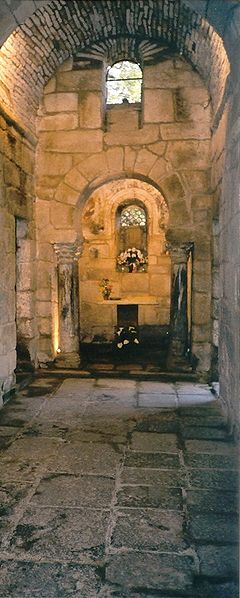 | |
| Church of Santa Comba (Bande, province of Orense) (7th c) |
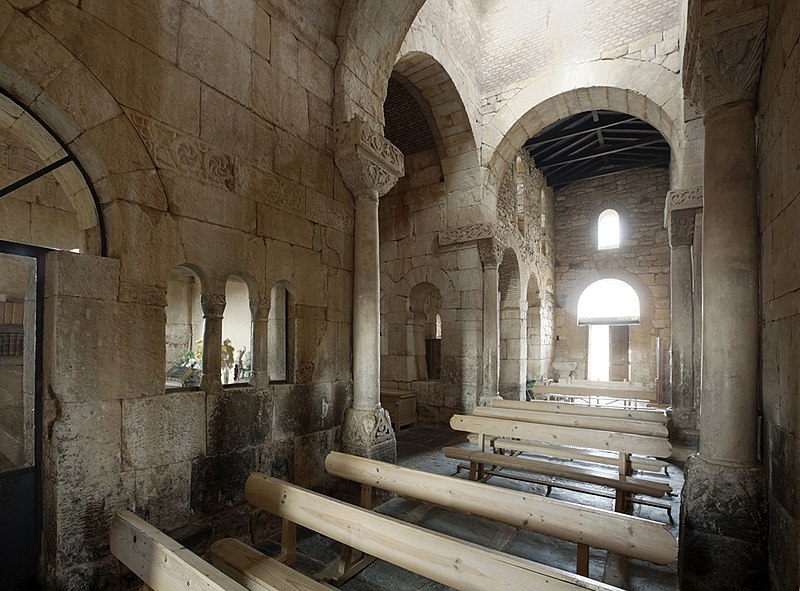 | |||
| Church of San Pedro de la Nave (Province of Zamora) (c. 680 AD) |
 | |||
| Crypt of San Antolín (Cathedral of Palencia) (7th c) |
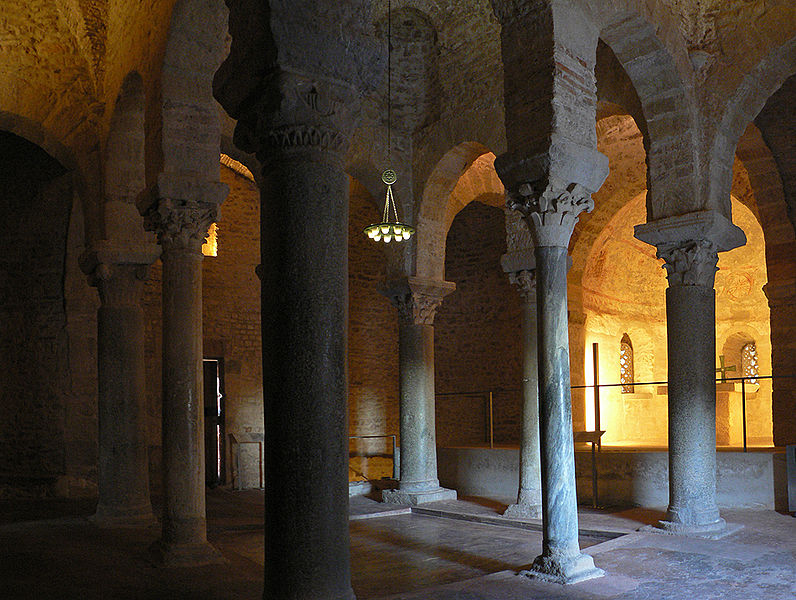 |
| Baptistery of San Miguel de Tarrasa (Barcelona) (7th c) |
 |
| Church of Santa María de Melque (Province of Toledo) (c. 668-729 AD) |
 |
| Hermitage of Santa María (Quintanilla de las Viñas, province of Burgos) (7th c) |
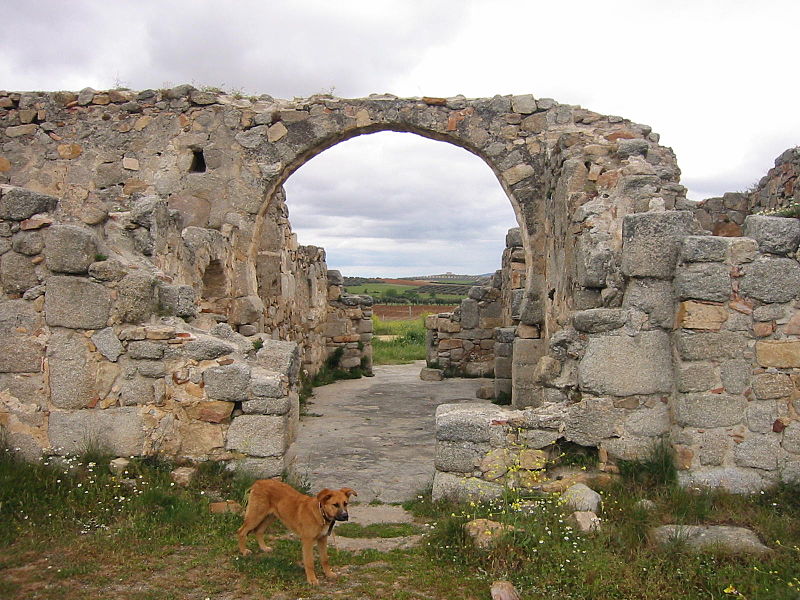 | ||
Church of San Pedro de la Mata (Sonseca, province of Toledo)
|
Labels:
Middelalderen,
Middeleeuwen,
Middle Ages,
Mittelalter,
Moyen Âge,
Spain,
Spanien,
Średniowiecze,
Viduramžiai,
Испания,
로마_가톨릭교회,
カトリック教会,
天主教
Subscribe to:
Posts (Atom)

